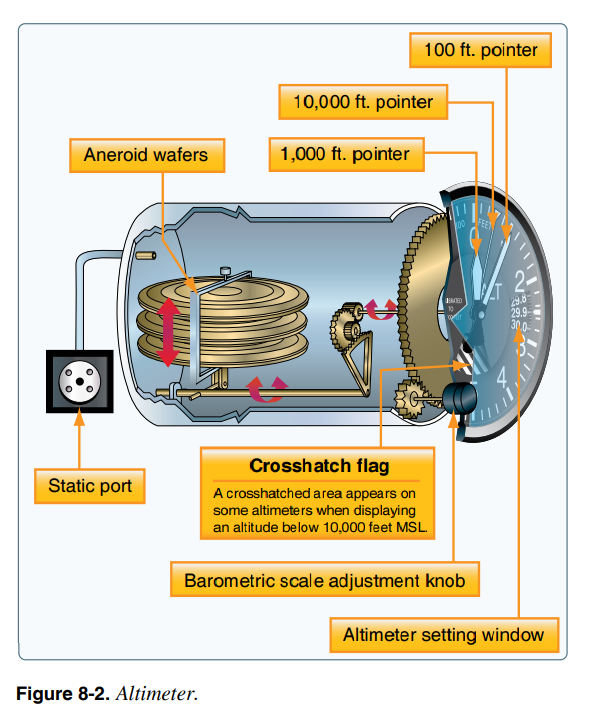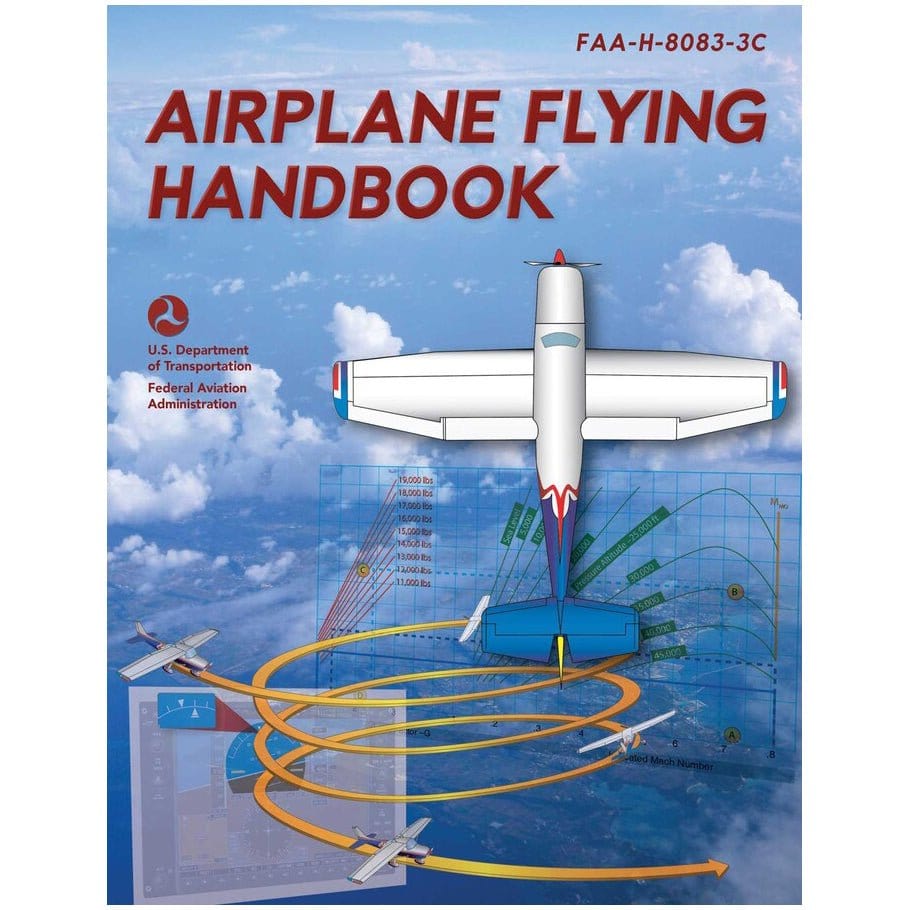Imagine sitting in a cozy cockpit, surrounded by an array of gauges and instruments. It's like being in the captain's chair of your own adventure. But here's the catch: having all those gauges is great, but if you're not entirely at ease with them or don't know how to use them effectively, it's like having a treasure map without a clue.
Now, let's talk about one of the treasures in your cockpit—the altimeter. It's not just another gauge; it's a pivotal tool every pilot should be well-acquainted with. In this article, we'll take you on a journey through the ins and outs of altimeters.
You'll discover how to decipher their readings, make sense of the data, and navigate those moments when your altimeter might play a little trick on you.
Fasten those seat belts and get ready to explore the world of altimeters!
What does an altimeter measure?
The type of altimeter standardly used onboard aircraft is similar to an upgraded and enhanced version of a barometer. Like a barometer, this type of altimeter measures air pressure.
Therefore, it is sometimes called a pressure altimeter. Although the altimeter is physically measuring air pressure, its purpose is to use that data to then extrapolate the aircraft’s current altitude.
How does an altimeter work?
Pressure altimeters debuted in 1929 and the first one was tested by legendary pilot Lieutenant General Jimmy Doolittle. Since the purpose of an altimeter is to use relative air pressure as a means of approximating the aircraft’s altitude, the altimeter must be built to read that pressure.
An altimeter consists of a vertical stack of aneroid wafers sealed in a housing. A tube extends from inside the altimeter casing out to the static port of the airplane. This allows the pressure in the altimeter’s sealed chamber to equalize with the pressure outside the aircraft.
As the chamber is exposed to the influence of the external static pressure, the wafers inside the casing contract or expand. If the static pressure coming through the tube is higher than the baseline pressure inside the chamber, it will press down on the wafers and cause the stack to contract.
This happens when the plane is descending. If the exterior static pressure is lower, it will release pressure on the wafers and allow them to expand. Expansion happens as altitude increases.
The wafers are connected to mechanical linkages that run to the needles on the altimeter gauge in the cockpit. As the wafers contract or expand, they move the linkages and therefore the altimeter needle.
The face of the altimeter gauge displays not static pressure, but altitude. This means that pressure to altitude conversions are done automatically for the pilot. All the pilot must do (assuming the system is working correctly) is to look down at the gauge to view the current altitude.
(source: FAA PHAK)
Reading the altimeter
The altimeter face on the standard cockpit gauge has three hands. These hands communicate elevation in various increments. When reading an altimeter note that the long, skinny hand registers altitude in 10,000-foot increments, the medium length hand shows 100-foot increments, and the short hand communicates 1,000-foot increments.
Altimeter settings
The internal pressure inside the altimeter housing is calibrated to a baseline of 29.92” Hg (inches of mercury), based on the accepted International Civil Aviation Organization (ICAO) standard atmosphere sea level constants and assuming an ambient temperature of 15°C. Under these conditions, the standard atmosphere decrease in pressure is 1” Hg per 1,000 feet of altitude gain up to 5,000 feet.
Of course, it is very rare to be flying under conditions that precisely match those of the ICAO standard atmosphere. This makes it important for pilots to have the ability to adjust and calibrate the altimeter to align with their actual local nonstandard pressure readings.
These setting adjustments are done using the knob on the left and the Kollsman window on the right side of the altimeter gauge face. During preflight, the pilot turns the knob until the inches of mercury reading in the Kollsman window matches that of the weather station at the departure airport. This shifts the constant to match current conditions.
Limitations of an altimeter
A pressure altimeter is a useful tool for approximating altitude; however, it is not fool proof. It helps for pilots to be aware of some of the inherent limitations of a pressure altimeter so they know what can cause it to display an inaccurate altitude.
Pilots should also remember to use the altimeter reading in addition to other observations and readings so they can develop an intelligent and informed understanding of aircraft altitude throughout the flight.
Temperature changes are one of the most common causes of altimeter errors. If you fly over an area of warmer air, the relative air pressure at your current altitude will be higher than it was while you were over the cooler air.
Your altimeter will read this higher pressure as a decrease in elevation and you may incorrectly believe you need to ascend to maintain altitude.
Inversely, as you fly over an area of cooler air, the air pressure will decrease, and the altimeter will read that decreased pressure as an increase in elevation.
Pilots who descend based on this flawed altimeter reading risk becoming a controlled flight into terrain (CFIT) statistic if they do not have an appropriate safety margin built in. Thankfully, the magnitude of temperature induced altimeter errors is usually minor and does not cause significant problems.
Takeaways
Altimeters are tools that use air pressure to gauge altitude. They are not infallible but still provide useful telemetry for pilots. To learn more, watch FLY8MA’s video about how an altimeter works, and see the inner workings of this device.
What to learn more about altitude and flight maneuvers?
Check out these links!
- Watch Your Attitude: A Complete Guide to Aircraft Attitude Indicators
- Airfoil Camber: Its Affect On Aerodynamics How it Generates Lift
Did you find this article helpful?
Do you think we missed anything important? Let us know in the comments below!












1 comment
Fred
“If you fly over an area of warmer air, the relative air pressure at your current altitude will be higher than it was while you were over the cooler air.”
So warm air is more dense than cooler air, and that is why the air pressure is higher?